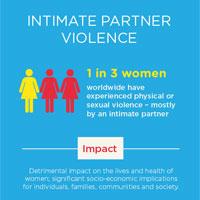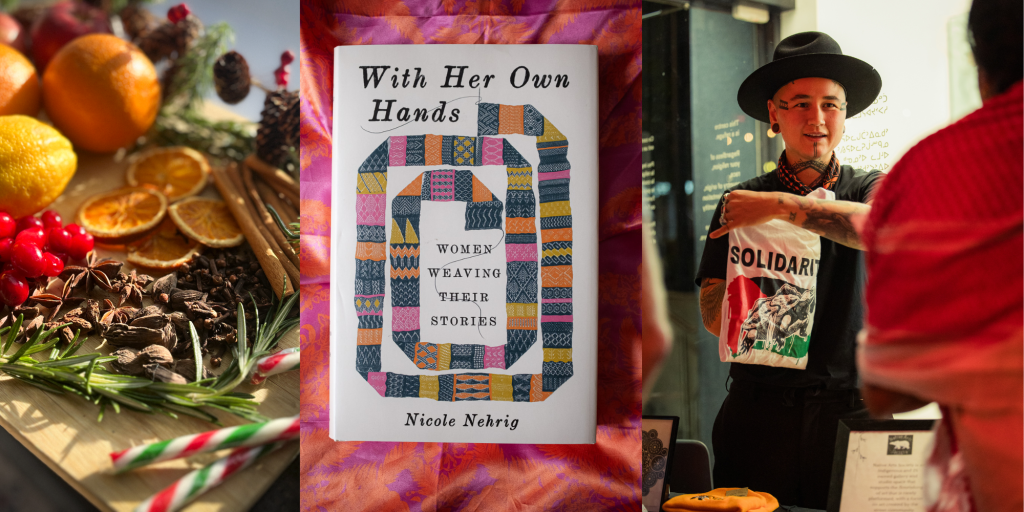Gender-based violence knows no borders
From Nigeria to Canada to the UK gender-based violence
knows no borders
Blog by: Chioma Akuabia Ukwuagu Programme Officer, Female Leadership/Gender Justice and Good Governance, Genevieve Gauthier Gender Justice Programme Officer, Jemma Stringer Gender Justice Officer
The 16 Days of Activism against Gender-Based Violence is a global campaign, bookended quite deliberately by two international days of reflection and action which open and close it: the International Day of Eliminating Violence Against Women and International Human Rights Day. It’s a period that we take very seriously at Oxfam. We cannot work with others to overcome poverty without addressing gender inequality.
We called on Oxfam’s gender specialists in Nigeria, Canada and the UK to tell us more. Here’s what they had to say…
As we sat down to write this blog, Genevieve in Canada, Chioma in Nigeria, and Jemma in the UK, we realised that each of our experiences of gender-based violence had strong similarities. For each of us, our local contexts provided the backdrop for the power relations, structures and social norms that underpin an internationally shared problem: violence against women and girls.
Gender-based violence (GBV) refers to the use of use of power to enforce gender norms, and in our discussions it became clear that in our own contexts, violence against women and girls (VAWG) is the most prevalent form of gender-based violence.
Violence against women and girls is an expression of unequal relations between men and women, and is both a cause and consequence of gender inequality.
Around the world, 4.5 million people are victims of forced sexual exploitation, among which 98% are women and girls. 700 million women alive today were married before 18 – more than one-third were married before 15. In 2012, 1 in 2 women murdered worldwide were killed by their partners or their family. Only 1 out of 20 men were killed in such circumstances. Our three short testimonies show the reality that women and girls face in different countries. From North to South, west to east, violence against women and girls is a global problem that knows no borders.
Nigeria: Chioma Akuabia Ukwuagu, Programme Officer, Female Leadership/Gender Justice Country Lead
In Nigeria, VAWG/GBV is a large problem, and it has been increasing rapidly. There is no legislation that protects individuals from violence, and there is no access to justice for victims of GBV. The perpetrators of GBV are able to get away with it because there is no law against these acts.
Compounding this, there are a number of social stigmas attached to experiencing violence, and these make it very difficult for victims to come forward. Levels of reporting are very low, and when women do go to the police, they are often blamed for the violence. But there is hope: the Violence against Persons Prohibition draft legislation has gone through two readings in the National Assembly, and we are hopeful that it will pass.
Women in Nigerian politics are subjected to fraud, emotional and psychological abuse, and threats. With the elections next year, we need to talk about these challenges and address them. This is a political challenge too, in terms of not having the legislation against violence that protects women and men. We must increase opportunities for women, especially in politics.
Cultural challenges are present as well, and are deeply rooted, but when women and men work together, attitudes are being changed. We also need to increase our advocacy rate and funding further. In addition women in the elite need to understand that violence cannot be hidden in a pocket somewhere or be viewed as a lower class problem, nor can the subject be avoided completely, because ultimately if not addressed it will get to them.
We need to raise awareness and challenge misconceptions about violence against women, and women need to be able to come together in solidarity.
Canada: Geneviève Gauthier, Gender Justice Programme Officer
In Canada, 6 December is the National Day of Remembrance and Action on Violence Against Women. This day was established in 1991 to mark the anniversary of the murders in 1989 of 14 young women at l’École Polytechnique de Montréal. They died because they were women. This year is the 25th anniversary and there is still the need for a collective reflection on the fact that women and girls still face violence everyday simply because of their gender.
Indeed, even after all these years of awareness raising and advocacy, statistics show that Canadian women were 11 times more likely than men to be a victim of sexual offences and three times as likely to be the victim of criminal harassment or stalking. In Canada, while Aboriginal people represent only about 4% of the population, Aboriginal women and girls account for 16% of homicides and 11% of missing persons. Over the past 30 years, it is estimated that over 1,186 Aboriginal women and girls have gone missing or have been murdered in Canada.
Recently, Canadian social media has seen a discussion on sexual violence go viral, after a woman reported she had been raped by a famous Canadian chat show host. Thousands of women then found the courage to report the sexual abuses they had experienced using the #beenrapedneverreported hashtag on Twitter. This movement went beyond Canadian’s frontiers, empowering women to openly talk about the violence they have been facing and thus, liberate themselves from their painful secrets.
This conversation needs to continue. Women and girls need to be able to speak up. And men and boys need to be part of the discussion if we really want changes to happen.
UK: Jemma Stringer, Gender Officer
I have worked for many years around violence against women in the UK, both with women who had or were still experiencing violence and abuse, and with men and women who had perpetrated the abuse. I have worked with women from all walks of life – from lawyers to sex workers to illegal immigrants, and with the men and women who committed crimes against them – from doctors to TV stars to grandmothers.
And there is always one common factor: control. I’ve worked with women who have been beaten, raped, strangled, stabbed, humiliated, trafficked into sex work, forced to commit crime, locked in the house, deprived of money, clothes and food, and had their rights violated in ways I wouldn’t have been able to imagine if I did not do this work. But in each instance, this violence against women was used to exert power and control over the victim. And I use the word victim here purposefully.
In the UK, and perhaps elsewhere, we often use the word ‘survivor’ to describe those women who have experienced violence. But the women I worked with, in the main, had not yet survived. Many had lost their homes, their families, their children, their mental health, their physical health. Some had started to use drink and drugs to deal with the trauma of what was happening to them, others self-harmed or attempted suicide to achieve the same ends. Others didn’t survive at all.
My experience has taught me that we have a long way to go and a lot to learn in the UK if we are going to address the issue of violence against women successfully. As well as improving support services to those who have experienced abuse, and putting the systems in place to ensure women are able to seek justice for the crimes committed against them,we also need fundamental changes to the power relations that perpetuate violence against women. This calls for preventative action.
It is necessary but not enough to provide services. We need to address the underlying social norms and power relations that mean that each year across the UK up to three million women experience violence, including domestic violence, rape and sexual violence, sexual harassment, forced marriage, crimes in the name of ‘honour’, female genital mutilation (FGM), trafficking and sexual exploitation. To do this we need to learn from the experiences of others around the world that have worked against these violations of women’s human rights, and collaborate internationally to address this shared problem.
Violence against women and girls cuts across race, religion, class, education levels and international borders, and it needs to be addressed as a global problem. We must all work in our own environments, and we must share our successes and our challenges with each other, working together as an international community to transform the power relations, structures and social norms that underpin violence against women and girls. Only when we work together to tackle power relations and patriarchy will we be able to change things and achieve a society free of violence against women and girls.
This post also appears on Oxfam GB Policy and Practice web site: https://policy-practice.oxfam.org.uk/blog.


